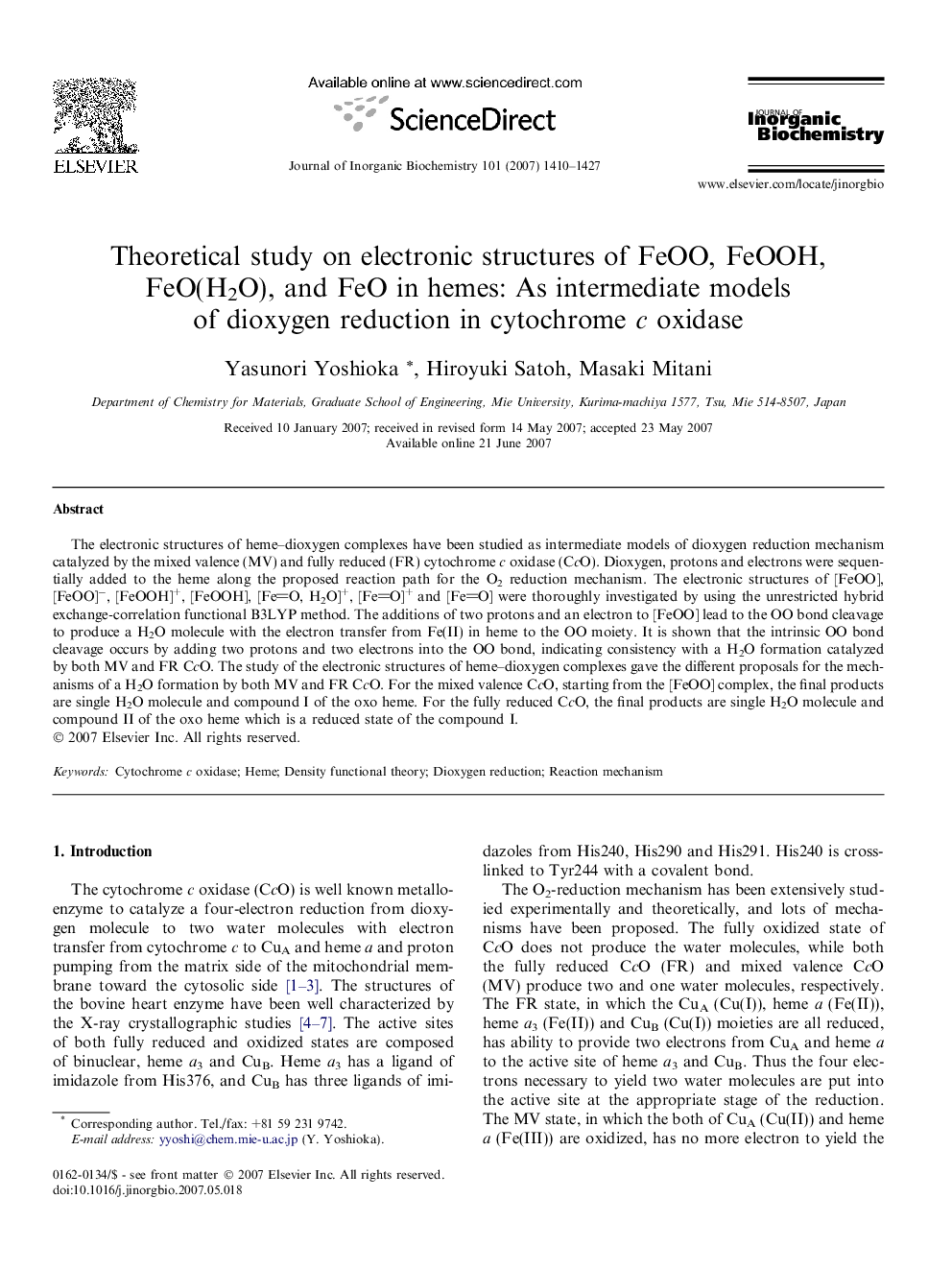| Article ID | Journal | Published Year | Pages | File Type |
|---|---|---|---|---|
| 1316730 | Journal of Inorganic Biochemistry | 2007 | 18 Pages |
The electronic structures of heme–dioxygen complexes have been studied as intermediate models of dioxygen reduction mechanism catalyzed by the mixed valence (MV) and fully reduced (FR) cytochrome c oxidase (CcO). Dioxygen, protons and electrons were sequentially added to the heme along the proposed reaction path for the O2 reduction mechanism. The electronic structures of [FeOO], [FeOO]−, [FeOOH]+, [FeOOH], [FeO, H2O]+, [FeO]+ and [FeO] were thoroughly investigated by using the unrestricted hybrid exchange-correlation functional B3LYP method. The additions of two protons and an electron to [FeOO] lead to the OO bond cleavage to produce a H2O molecule with the electron transfer from Fe(II) in heme to the OO moiety. It is shown that the intrinsic OO bond cleavage occurs by adding two protons and two electrons into the OO bond, indicating consistency with a H2O formation catalyzed by both MV and FR CcO. The study of the electronic structures of heme–dioxygen complexes gave the different proposals for the mechanisms of a H2O formation by both MV and FR CcO. For the mixed valence CcO, starting from the [FeOO] complex, the final products are single H2O molecule and compound I of the oxo heme. For the fully reduced CcO, the final products are single H2O molecule and compound II of the oxo heme which is a reduced state of the compound I.
